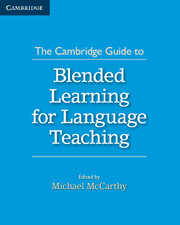Chapter 7 - Oral Output in Online Modules vs. Face-to-Face Classrooms
Published online by Cambridge University Press: 22 September 2021
Summary
INTRODUCTION
This chapter addresses the issue of oral output in the blended second language (L2) classroom. Speaking, or creating with the language, is a key component of a broad sociocultural theory of L2 learning (Lantolf and Beckett, 2009). As L2 instructors introduce more blended courses, which integrate online tools into the curriculum, in addition to existing face-to-face (F2F) class time, questions about second language acquisition (SLA) theory in computermediated instruction will need to be addressed (see also McCarthy, Chapter 1, this volume). Online learning can take many forms and is not always comparable to F2F learning (Smith et al., 2003). For example, synchronous computer-mediated communication (SCMC), such as video conferencing, creates different types of oral output from asynchronous computermediated communication (ACMC), such as text chat or virtual conversations. Studies have shown that the slowed down communication of asynchronous online communication can be beneficial for language learners (Smith et al., 2003). This chapter looks at differences in students’ oral output while using ACMC for an L2 course in comparison with their oral output during F2F class time. Results showed that students produced significantly more of the L2 in the online modules than they did in the F2F classroom. Issues of class-time distribution and student personalities were both shown to play a role in these results.
RATIONALE
In the midst of the ever-expanding web connecting language pedagogy, online and blended course design, SLA theory and advancing technological capabilities sits the second language instructor, wondering how to connect them all. Whether that instructor is a recent graduate or seasoned instructor, digital native or tech-savvy early adopter, there are far more questions about online course design than there are accepted best practices and published success stories. While language pedagogy has had decades to develop, and SLA theory is entering its adolescent period, the newest generation of distance learning is in its relative infancy (Kraemer, 2008). While distance learning is not new (think correspondence courses through the mail as early as 1840), the introduction of the computer in the 1980s and of Web 2.0 tools in the 1990s has helped bring the newest generation of interactive, computer-mediated communication (CMC) into language courses (Godwin-Jones, 2003).
- Type
- Chapter
- Information
- The Cambridge Guide to Blended Learning for Language Teaching , pp. 107 - 122Publisher: Cambridge University PressPrint publication year: 2015

